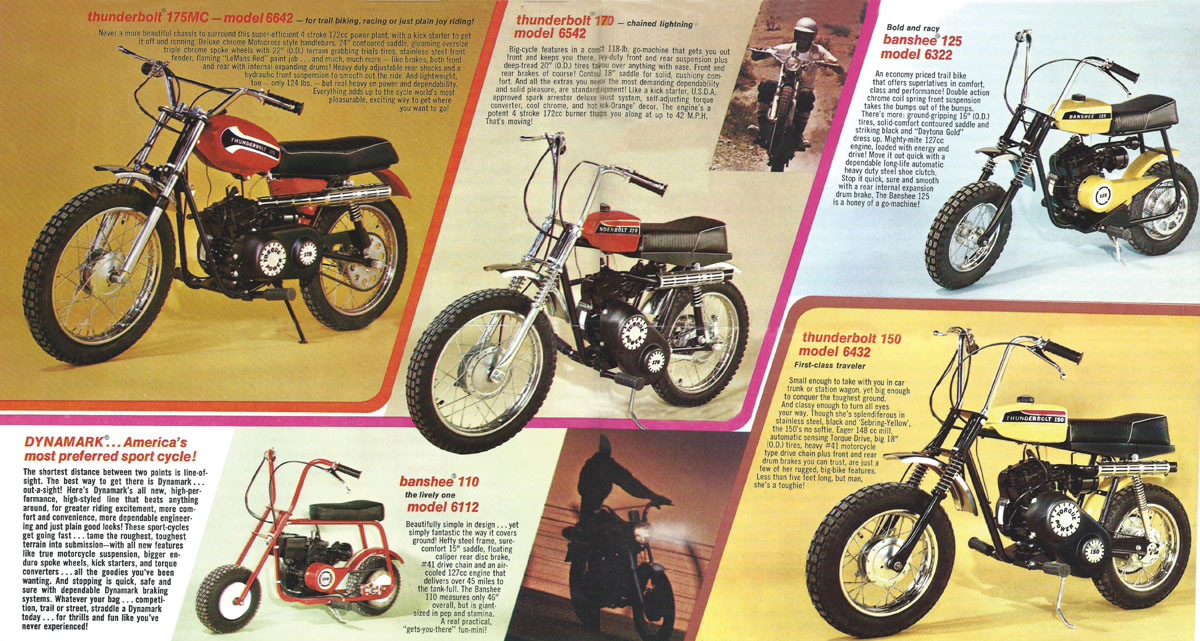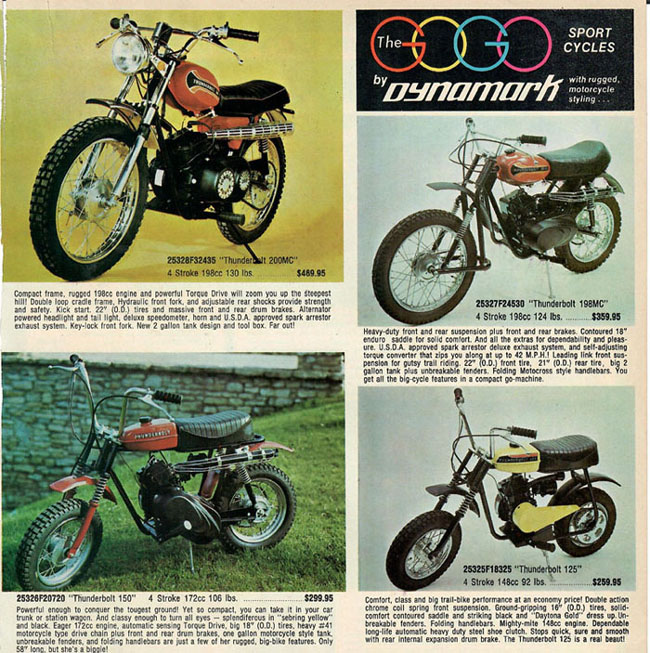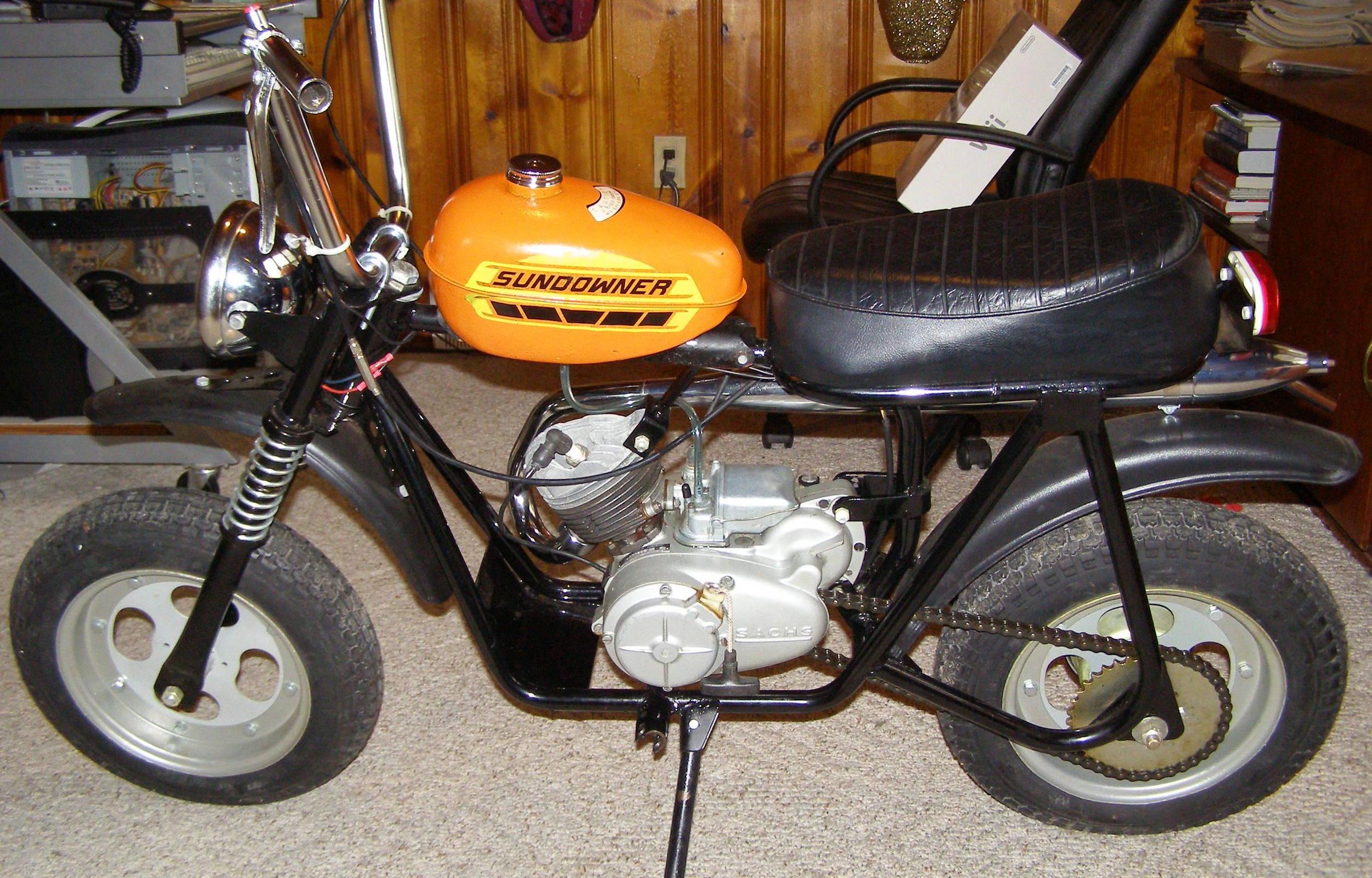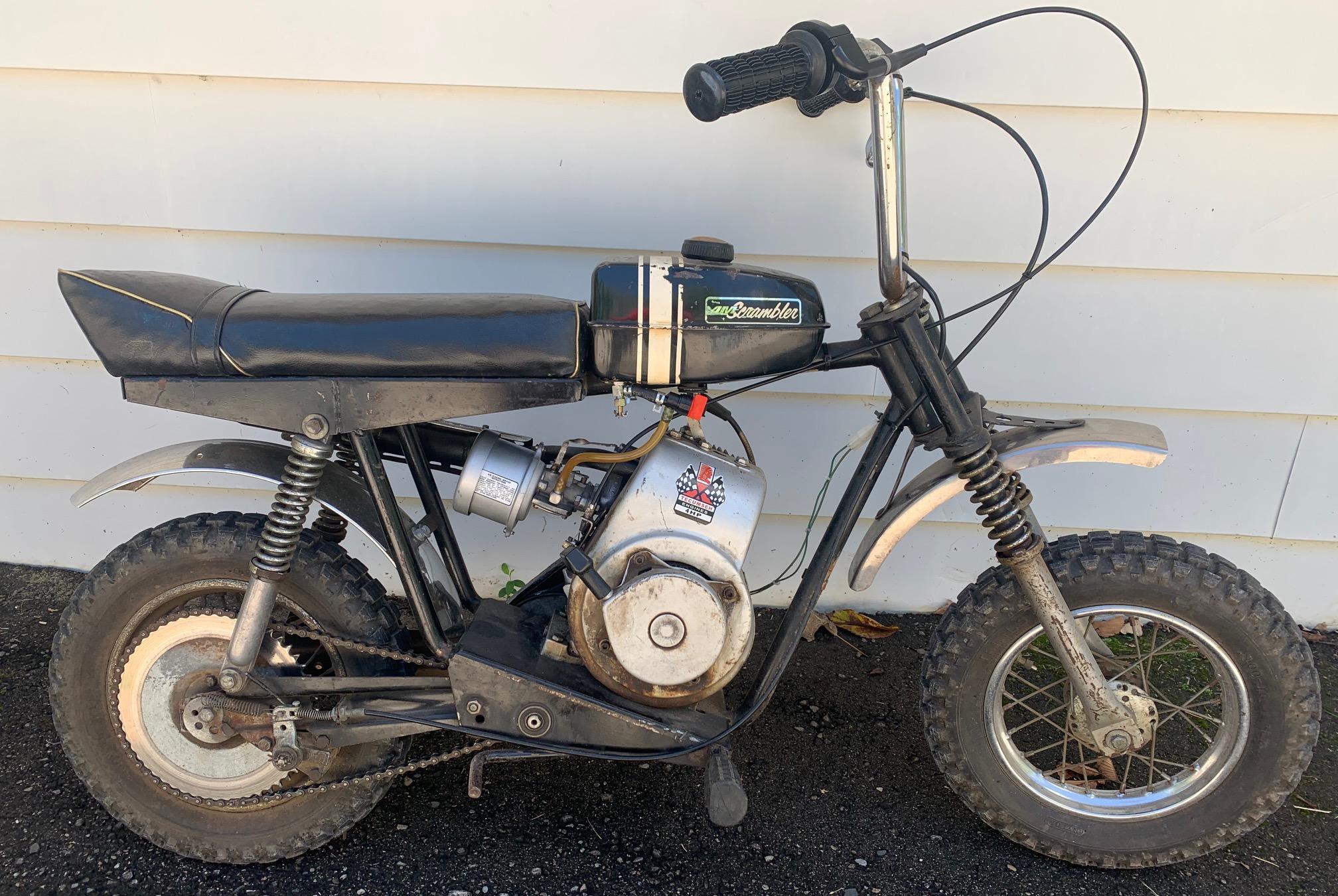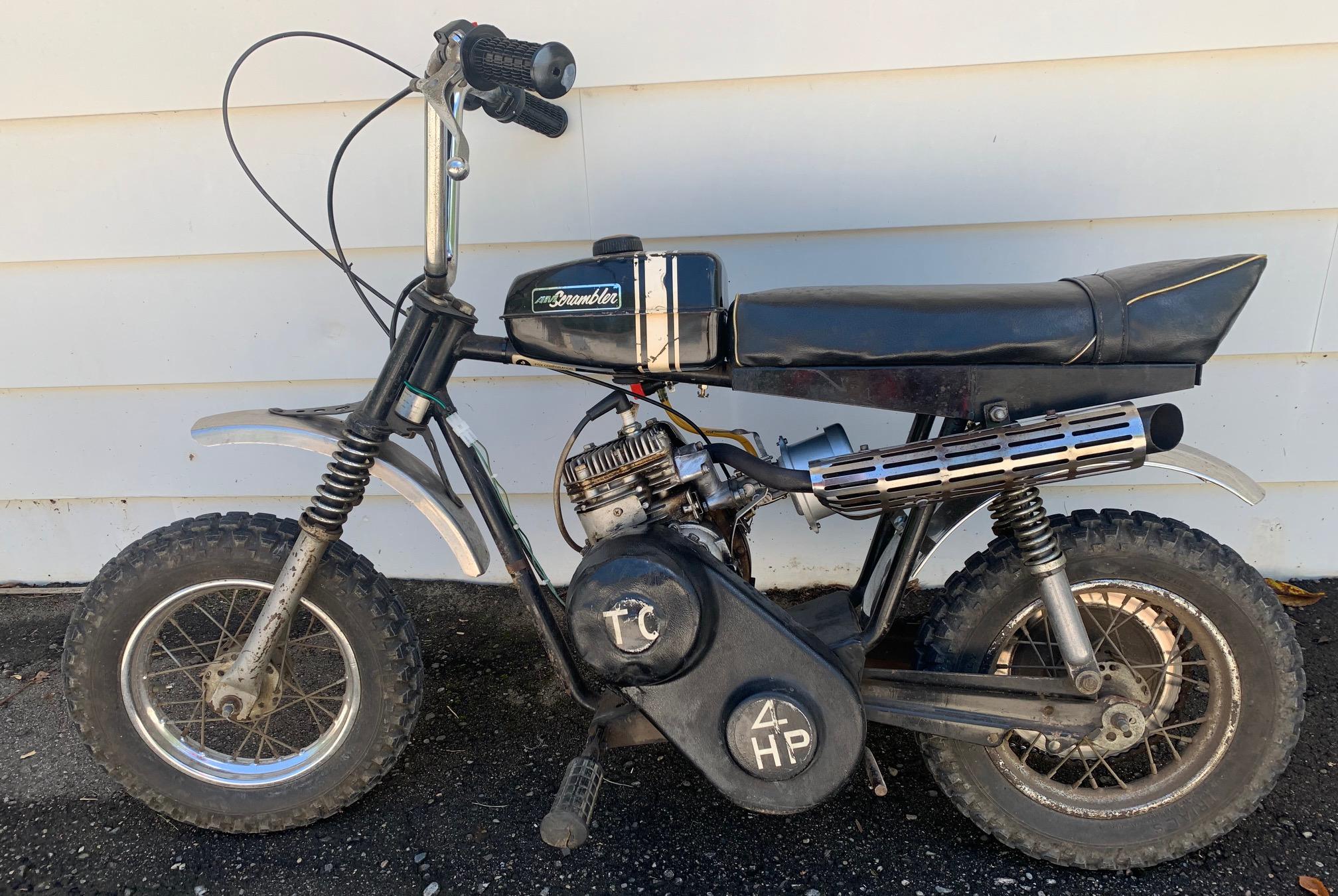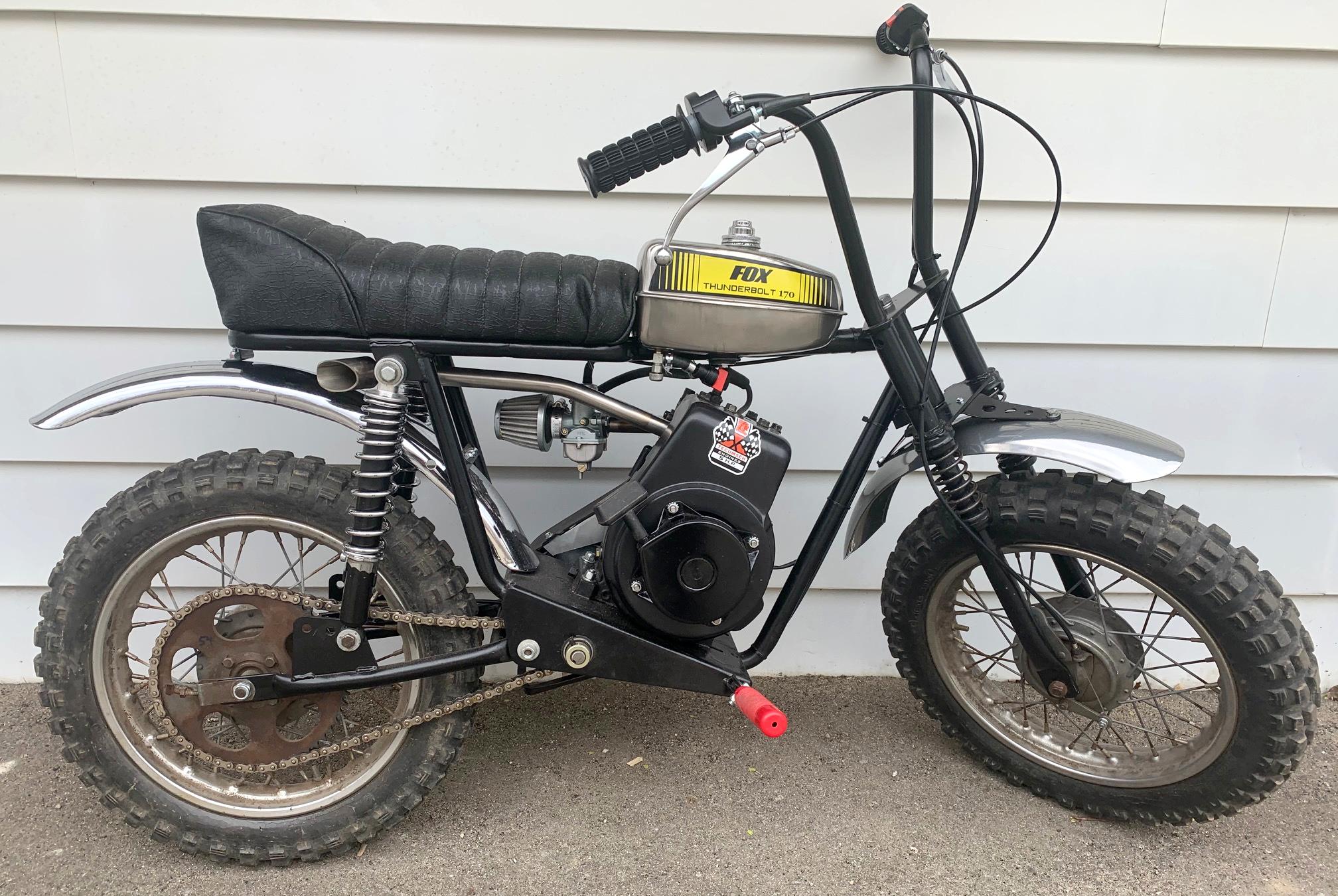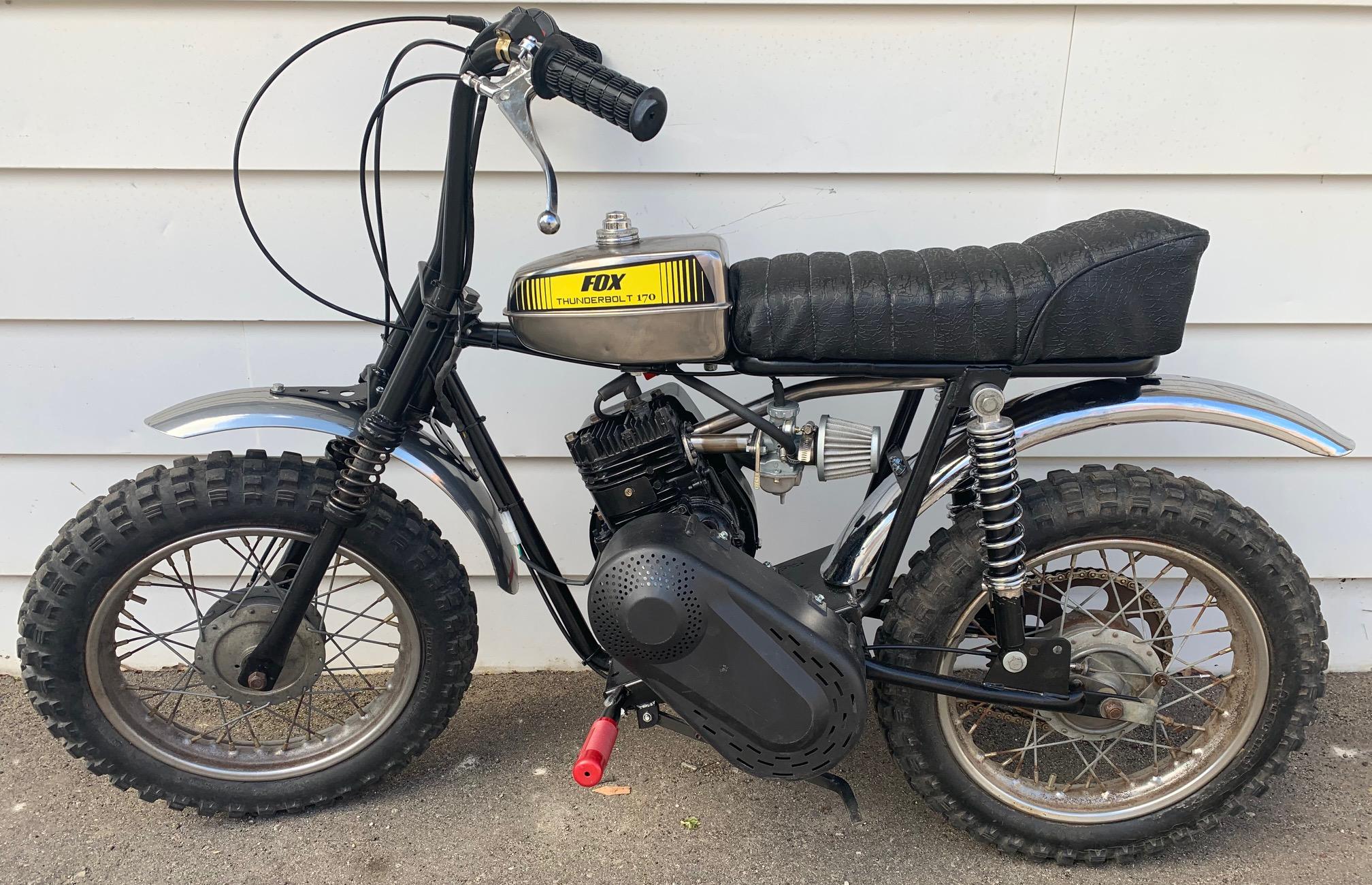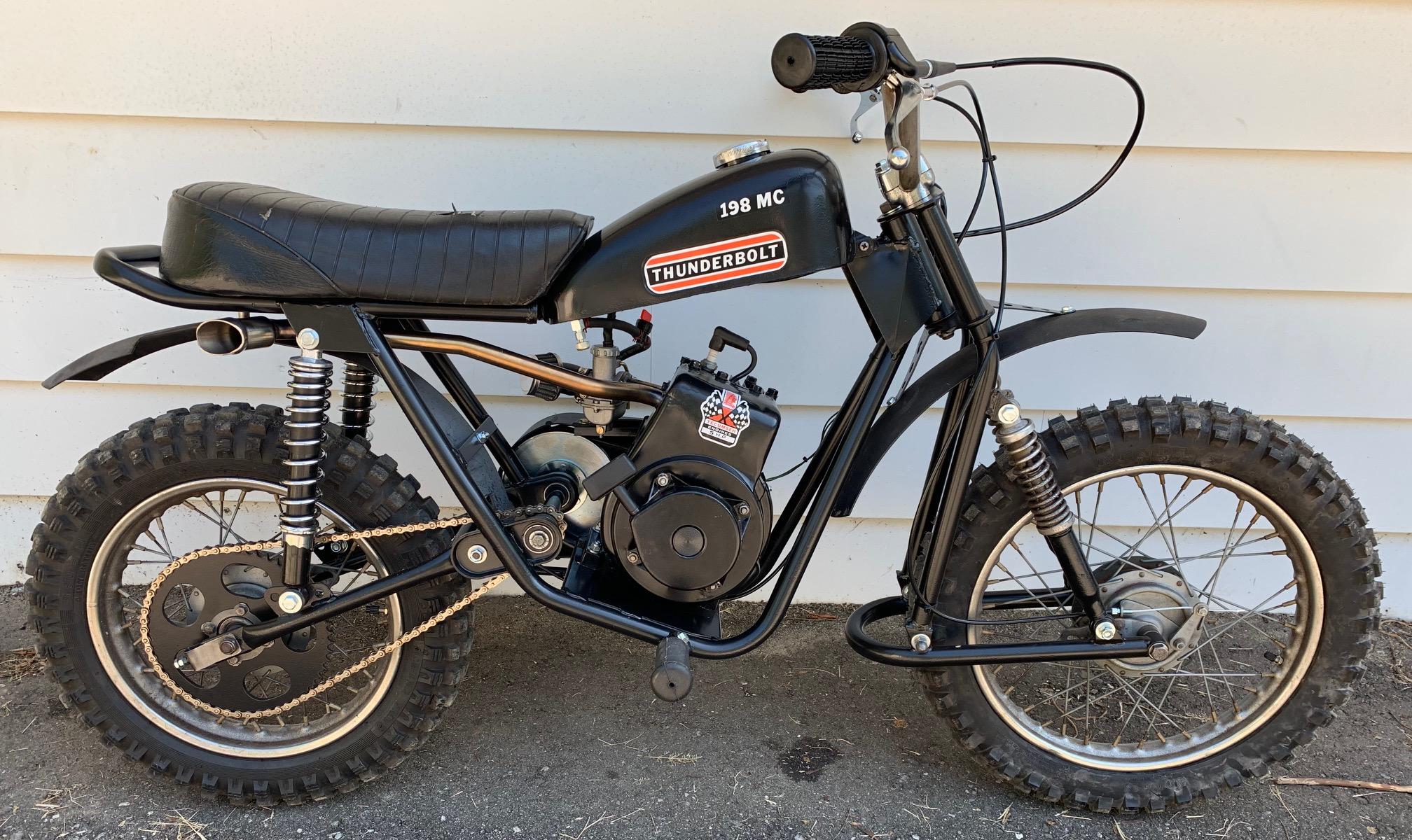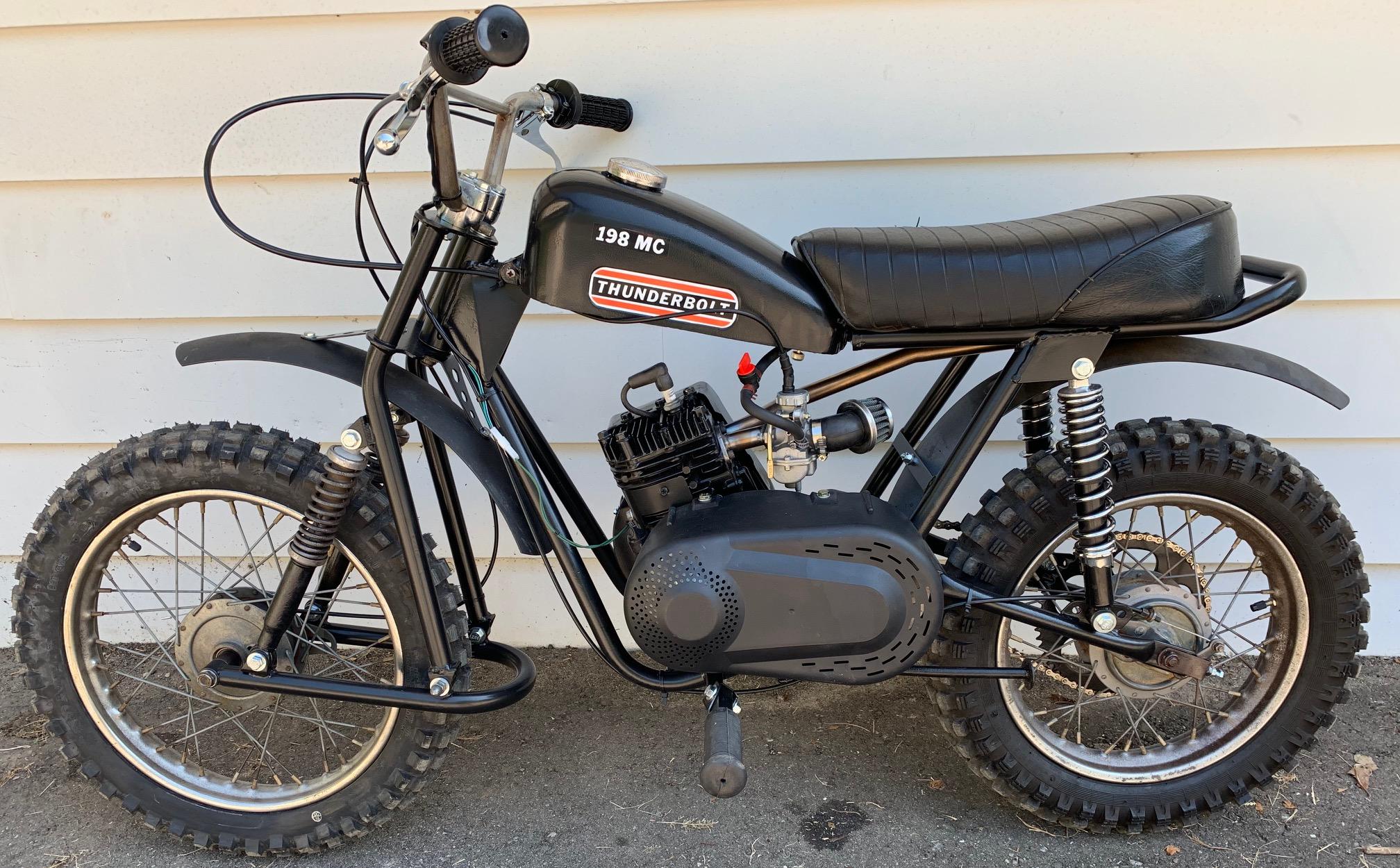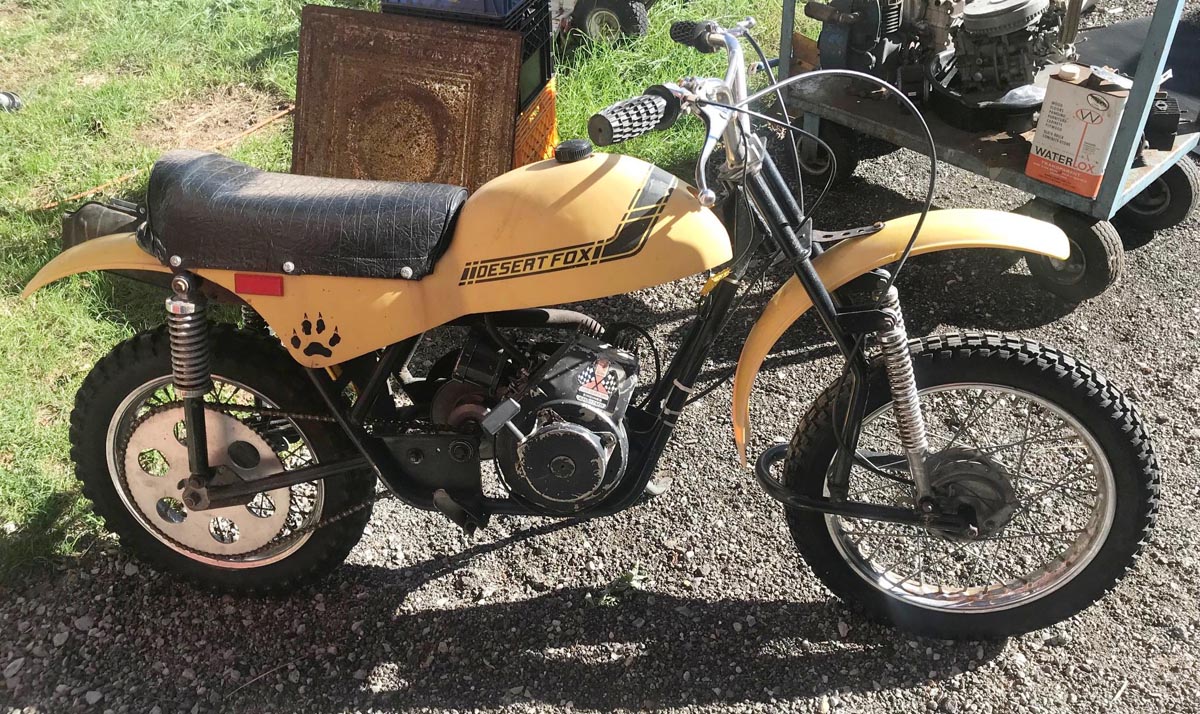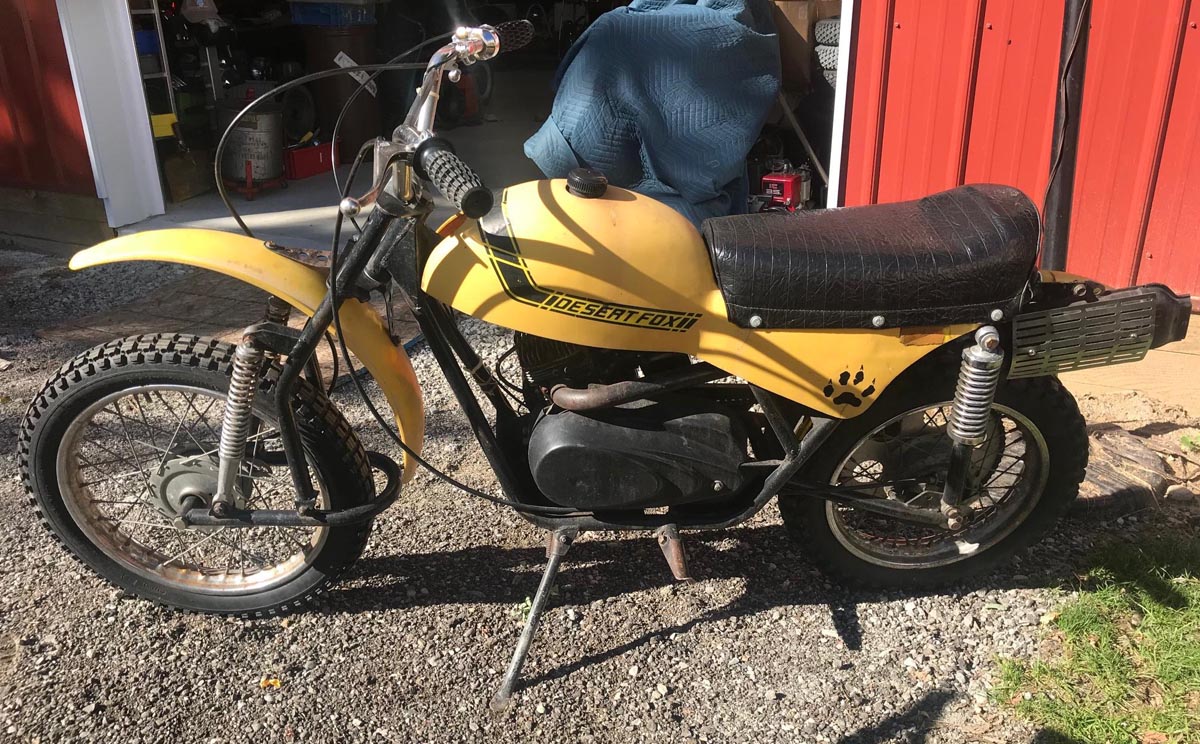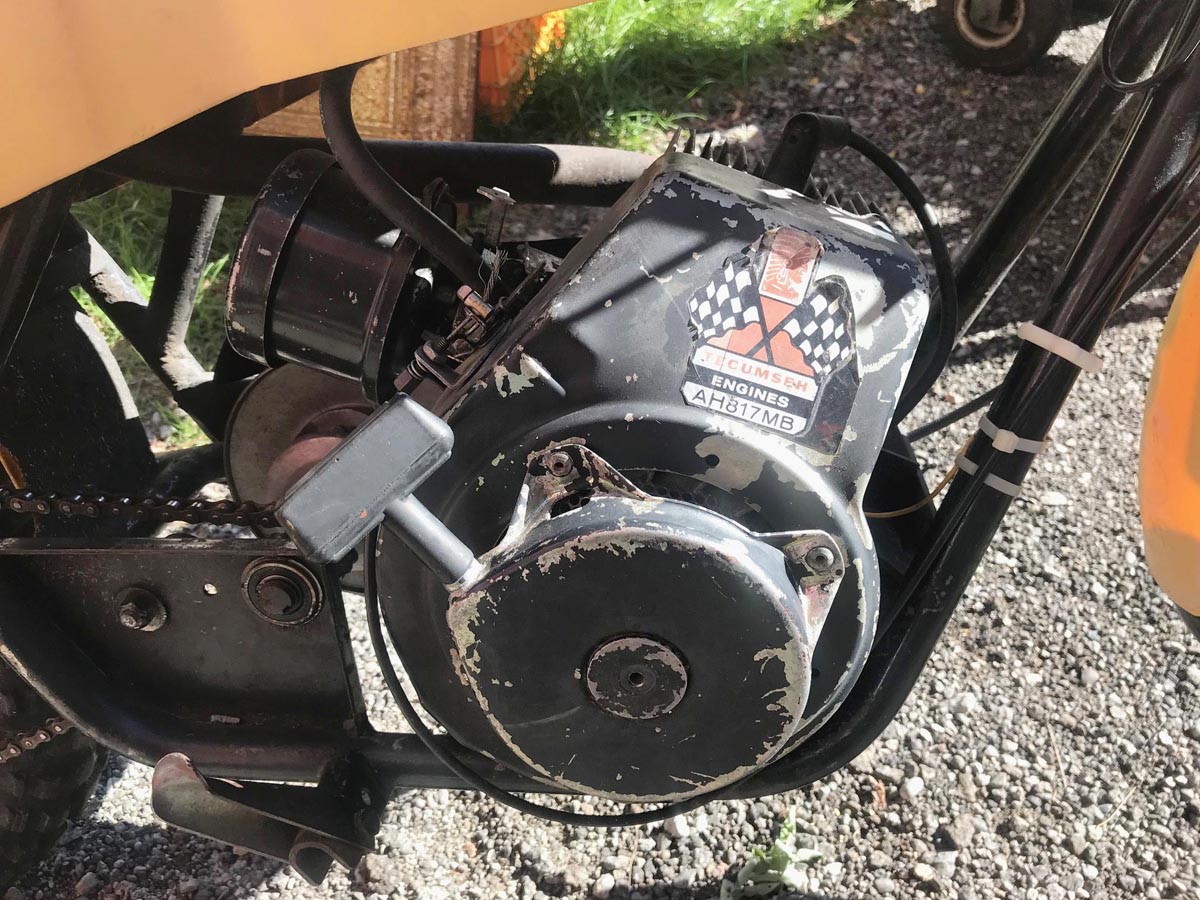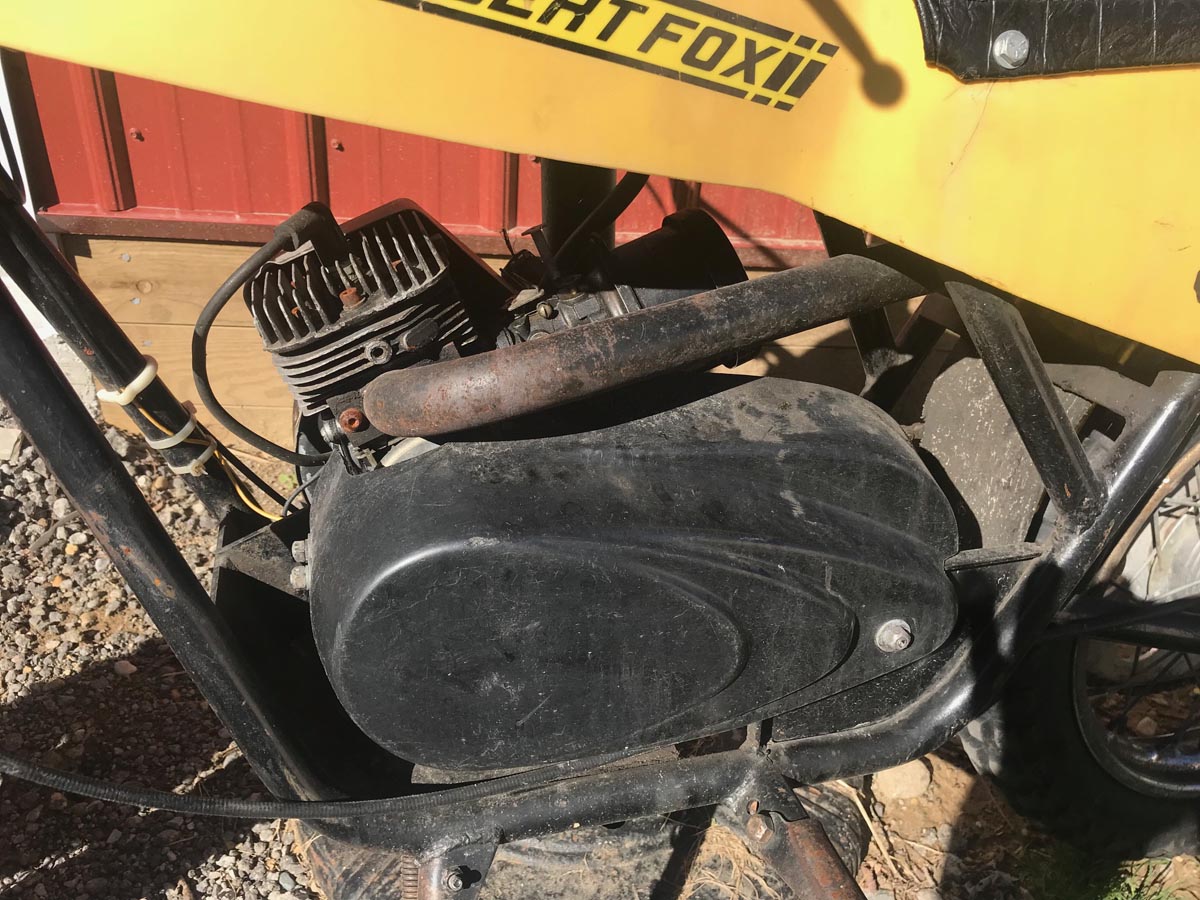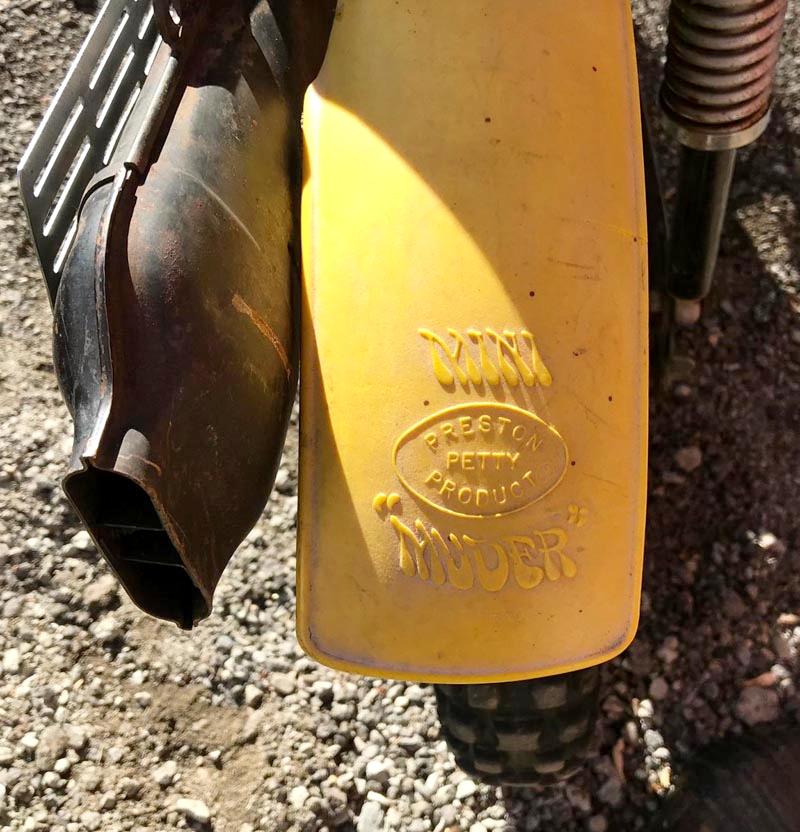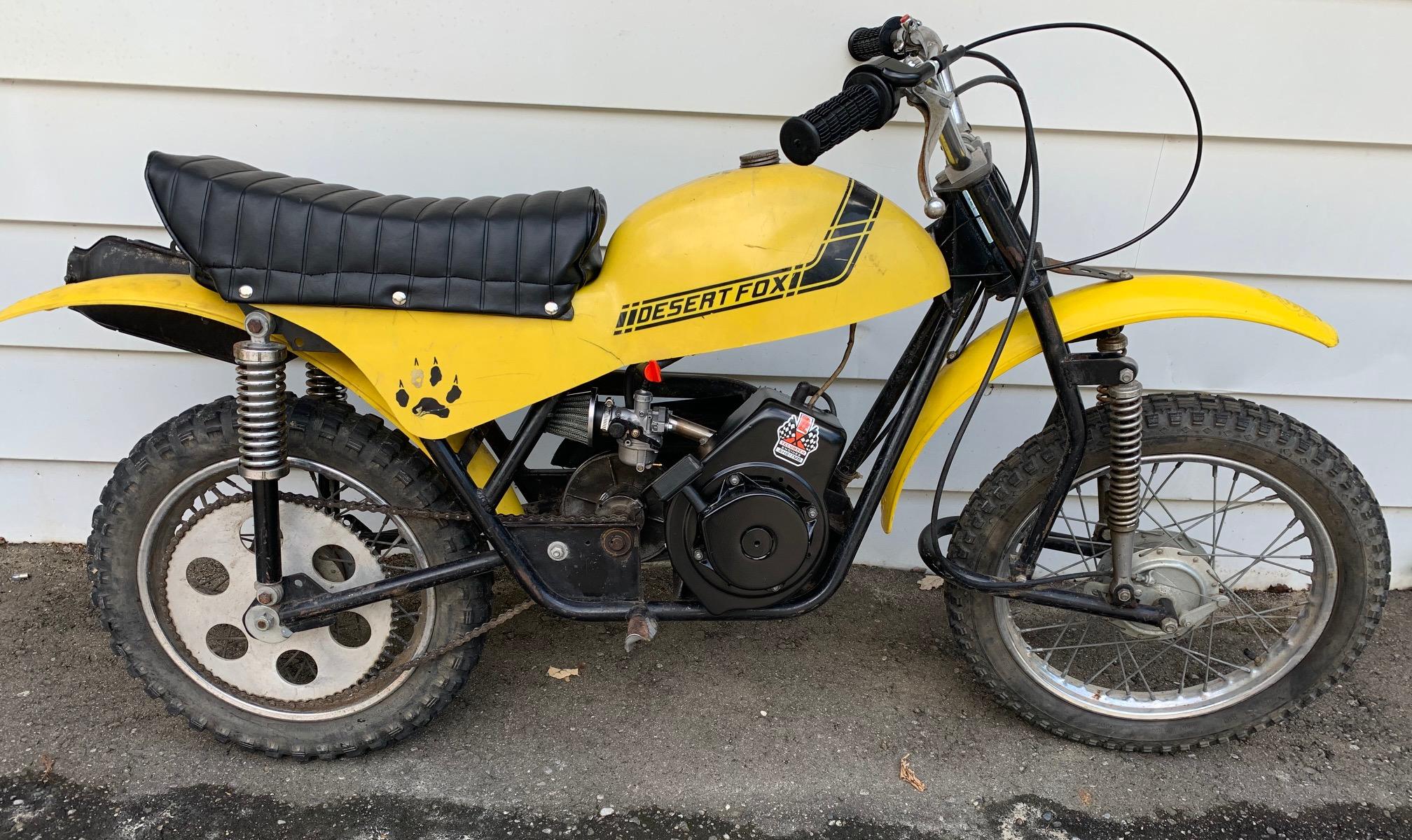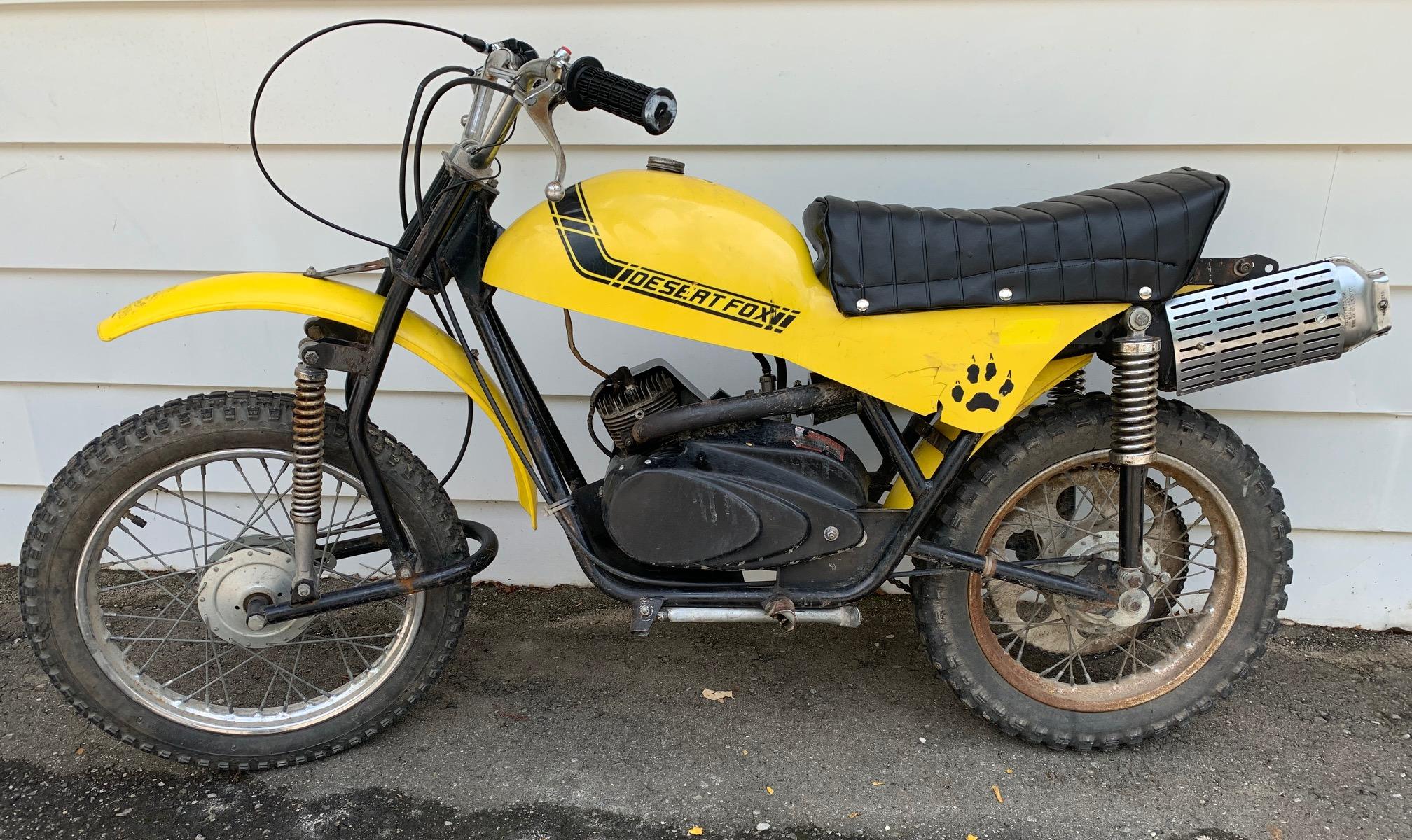I buy and collect Fox minibikes. 04/01/23. Email: cfh@provide.net
Overall Fox History and Info.
-
There isn't much history on the Fox Corporation (Janesville WI), so details
are a bit thin. But I'll try and fill in what I know, and hopefully
add more info to this page in the future.
Fox Corporation started just after WWII in 1946, selling motorized vehicles. Mostly stuff like farm carts and golf carts and later snowmobiles. But in 1958 Fox got into the go-kart market selling their "Go Kart" brand of fun carts. This fad seemed to fade a bit and by 1965 Fox was making minibikes too. Their first bike seemed to be the 1965 Fox Little Gen and it's 2.5 or 3hp motor (probably Lauson.)
In 1966 Fox started to get more serious about minibikes and introduced their "Sport Bike" (2.5hp Lauson) and "300" models (3 or 4hp Briggs) mini bikes. The 300 model had 6v lights, full suspension, jackshaft, fancy fenders and gas tank covers, centrifugal clutch. This can be seen in their Fox catalog #6, along with their go karts.
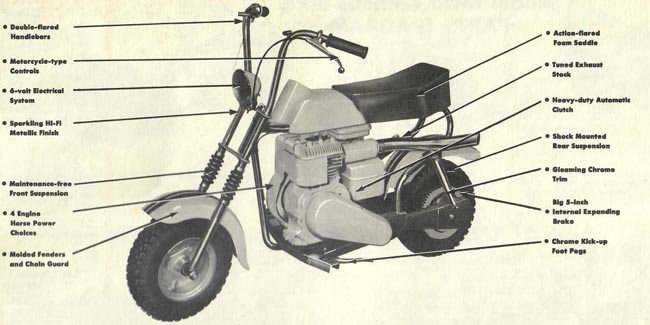
-
By 1967 Fox really got serious about mini bikes. Their
Fox catalog #7 showed
their "Campus Bike", which was basically an upgraded model 300 from the
prior year. It was available in a variety of formats from a no motor
version, to a 5hp Briggs model with lights. The Campus mini bike had 6" solid wheels and
full suspension (front and rear), and the top model had a funky gas
tank plastic cover, giving it a sleeky 1960s look. Fox also sold lower
minibike models like the Sprite, the Trail Bug, and the Doodle Bug (no relation
to the China-made Doodle Bug DB30 of the 2000s). The Sprite had 4" wheels,
and the Doodle Bug used 6" wheels. Most mini bike models used a jackshaft.
Note that in 1968 and 1969, as seen in the
Fox catalog #8 and
Fox catalog#9 (looking for a full
Fox catalog 1969, or a good scan of it), the models didn't change.
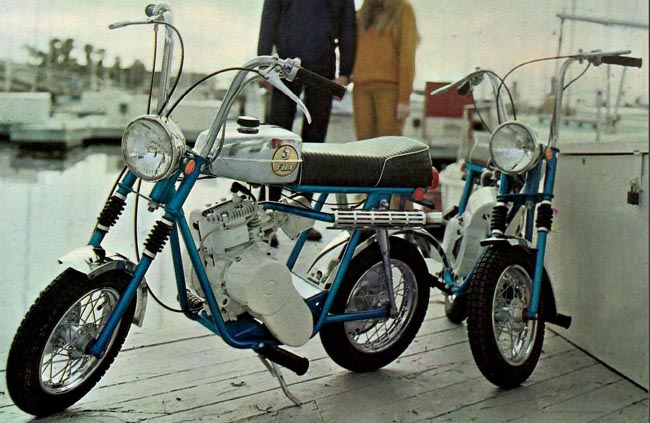
-
With 1970 Fox completely changed their mini bike models, as seen in their
Fox catalog #10. This probably came about
because Rupp changed their models significantly, and Fox wanted to
compete. The big change was spoked 10" wheels on all models (except
for the Doodle Bug, which still used 6" solid wheels.) These 10" spoked
wheels were not available from any U.S. manufacturer, so they were
imported from Italy (originally used for Italian scooters), which
was what Rupp was doing too. Also all minibike models
had chrome gas tanks and fancy exhausts (except the Doodle bug's was painted,
but it used the new gas tank design too).
Also new to Fox was Kelsey-Hayes rear disc brake used on the rear sprocket for all mini bike
models (even the Doodle bug minibike). Some Fox mini bikes had disc front brakes too.
Starting in 1969, first for Fox (and something many others followed) was the 20 degree slant motor mounts and a jackshaft (but no jackshaft on the Doodle bug, but it too had the slant motor mount). This 20 degree motor mount was known as the "tilt power plant" and was a first on the Fox 1969 models. Tecumseh was the motor of choice too, and frankly was leaving Briggs and Straton behind as the go-to mini bike engine. With the 20 degree mounted engine, the gas tank could not be mounted to the carb (as was done on Briggs engines.) Hence Tecumseh made their HS40 model #55266A engine specifically for Fox and the 20 degree motor mount. This was the early version of the HS40 with a slightly different head pattern (head gasket #32643), and a diaphragm carb (a float bowl carb was not ideal with a 20 degree slanted engine.) At this point it became obvious that Tecumseh was serious about supplying engines to mini bike makers, and that Briggs was a has-been. Hence Briggs got out of the mini bike engine supply chain, with Tecumseh taking over for just about every U.S. mini bike maker. Whether Briggs was forced out of the market, or just did not want to be in the market, is unclear.
In 1969/1970 Fox single speed bikes used centrifugal clutches, and dual speed minibikes used a 2-speed automatic clutch system, which utilized two centrifugal clutches (one on the motor and the other on the jackshaft.) This set up used a centrifugal clutch with two chains going to the jackshaft.
In 1971 Fox again changed their mini bike models, probably to follow Rupp's changes. A Fairbank Morse torque converter was the norm for most models (the 2-speed automatic centrifugal clutch set ups were gone). This dramatically increased the power of the bikes, as the Fairbank Morse converters were a very good design. Suspensions were bulked up too, again probably to compete more with Rupp. The Tecumseh diaphram carb was no longer used (a change Rupp made too). Instead a slant intake manifold was utilized to keep the float bowl carb level (because the 20 degree motor mount.)
